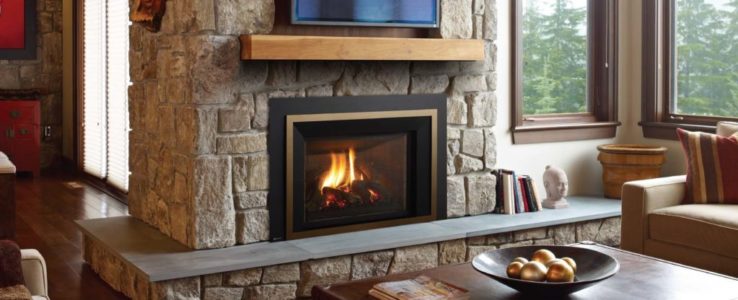Did You Know That Wood-Burning Fireplaces Don’t Actually Heat Your Home?
When you think of a wood-burning fireplace, do you think of warmth? Of course, you do! Any time we see burning wood, we know there’s going to be heat emerging from it. We often see wood-burning fireplaces in movies with families cozied up nearby. However, wood-burning fireplaces are made out to be much more ‘cozy and warm’ than they really are.
When you’re sitting next to this type of fireplace, you’ll definitely feel the radiant heat making you warm, but if you pay attention to the corresponding temperature in the rest of your home and the energy bill that accompanies the lack of warmth in other rooms, you’ll start to realize that wood-burning fireplaces don’t actually heat your entire home.
Let us explain.
Do you still feel the need to be wrapped up in a blanket when you’re sitting at the opposite end of the room from your fireplace? Does the rest of your house feel extra chilly the minute you leave the room that your fireplace is in? If your answer is ‘yes,’ it’s most likely due to the downsides that come with your wood-burning fireplace. If you answered, ‘no,’ you’re likely compensating for this loss of heat caused by your fireplace in your electric bill. Neither are optimal situations.
Wood-burning fireplaces are only able to create a very small amount of heat to begin with, so it’s no surprise that they’re actually the least efficient type of fireplace when it comes to producing heat.
They’re also very good at working against themselves by pulling heat right out of your home. Since fires need oxygen to survive, they pull oxygen from your home along with heated air. Additionally, when you open the damper (the door that opens and closes the chimney flue) it’s comparable to opening a window. The flue actually pulls warm air out even quicker than it would escape a window because it has a vacuum effect. This vacuum effect is needed as it pulls smoke and any unwanted gases outside rather than into your home, making the loss of warm air unavoidable.
Unfortunately, your wood-burning fireplace technically does exactly the opposite of what you’d like it to do!
So when your fireplace is crackling away and you still feel a lack of warmth, you probably turn on your furnace to add a little more warmth. This is where your money starts being sucked right out of the chimney. Not only will your fireplace pull it’s own heat back outside, but it will also be sending the heat from your furnace outside as well. The US Department of Energy shared that nearly 1,000 cubic feet of warmed air can be sucked up a chimney each minute.
Thankfully, there is a solution that’s cost-efficient, low maintenance, and carries the same type of ‘glowy fireplace aesthetic’ that many people look for in a wood-burning fireplace – and this solution is converting your wood-burning fireplace to a gas insert!
Now that you know the many downsides to a wood-burning fireplace, stop paying extra to heat your home and reach out to us today for a free consultation to find the right insert to fit your needs. We’d love to help!









